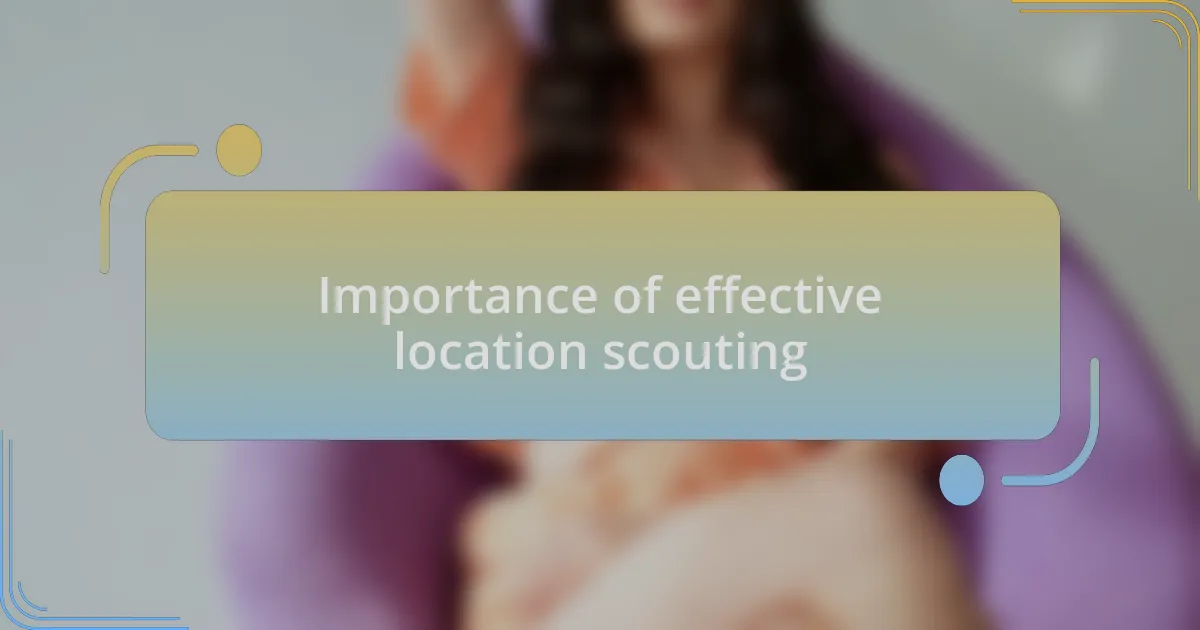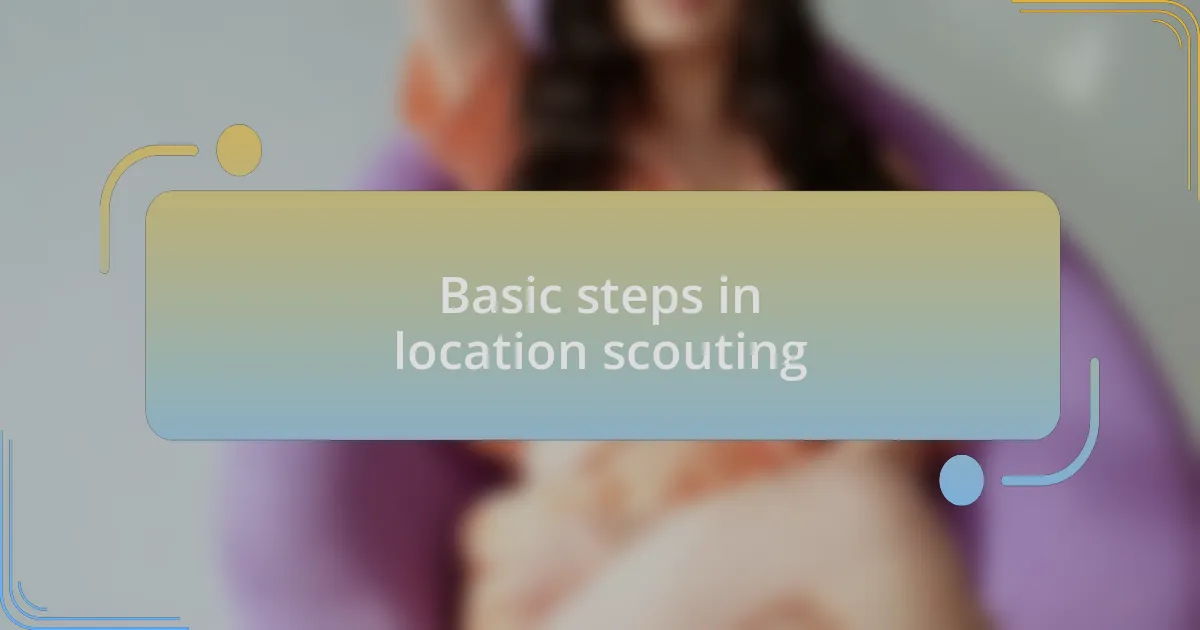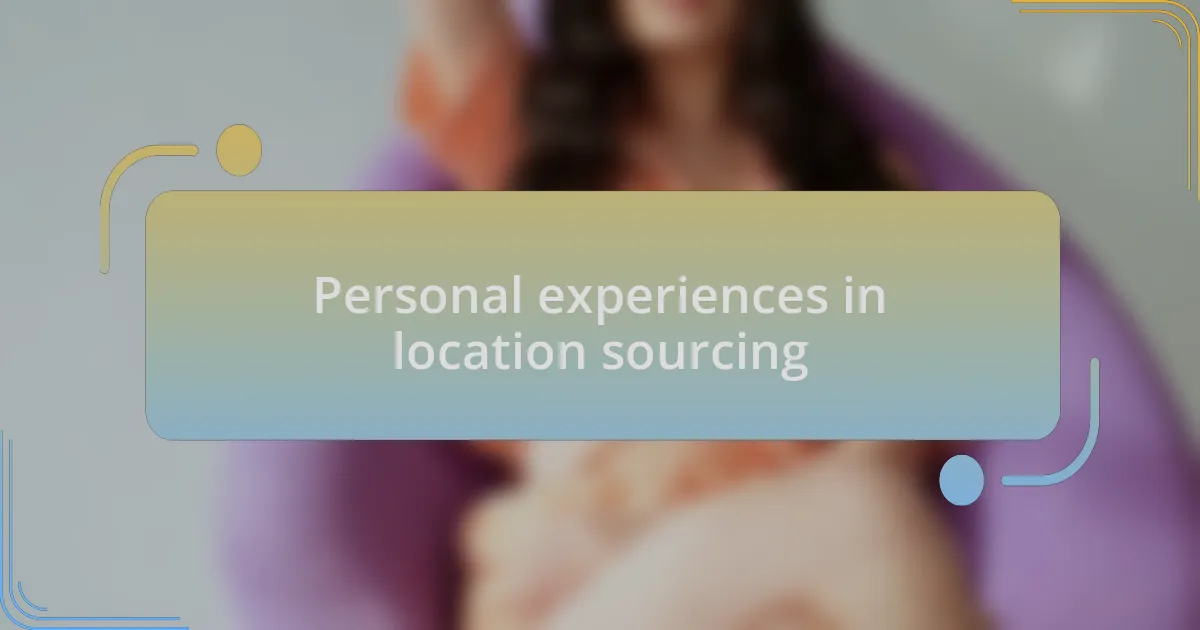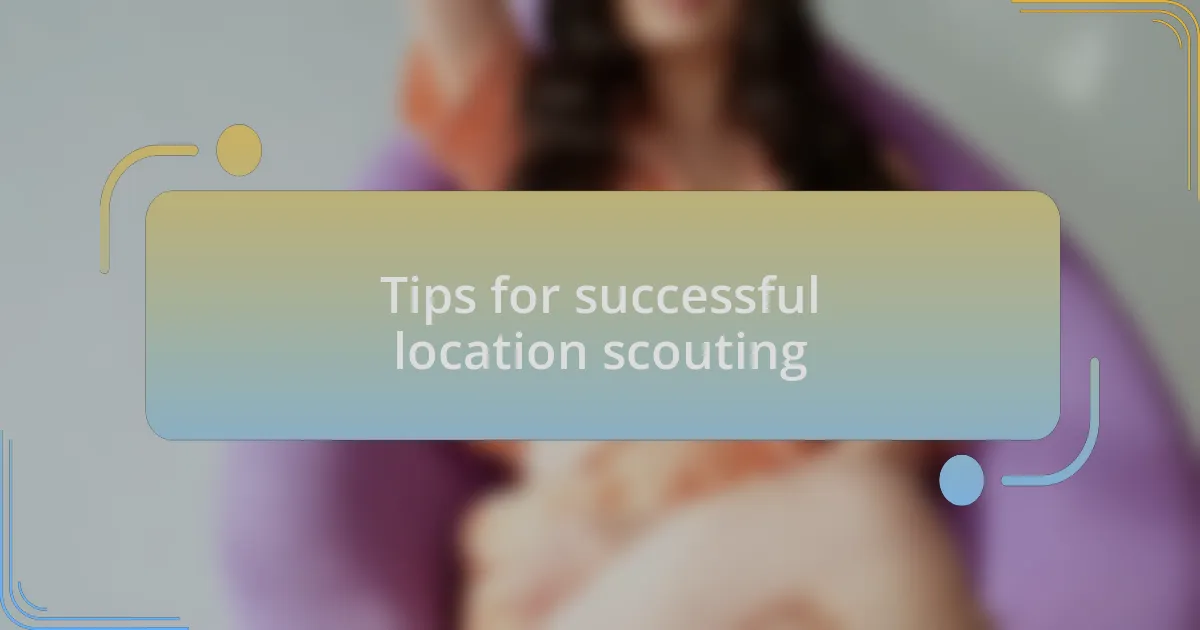Key takeaways:
- Effective location sourcing enhances storytelling by setting the right mood and atmosphere for scenes.
- Practical considerations, such as accessibility and community support, are essential when evaluating potential locations.
- Networking with locals and utilizing online communities can uncover hidden gems that align with the film’s vision.
- In-person visits are crucial to accurately assess locations, as photos may not always capture reality.

Understanding film location sourcing
Sourcing locations for film production is more than just finding a pretty backdrop—it’s about creating a mood and storytelling through setting. I remember when we needed a remote cabin for a suspense thriller; the right location can elevate tension and immerse viewers in the narrative. Have you ever noticed how a single environment can completely shift the tone of a scene?
One pivotal aspect of effective film location sourcing is understanding the logistical challenges that come with each site. For instance, I faced a situation where a picturesque beach turned out to be a logistical nightmare due to restricted access. It taught me a crucial lesson: always scope out the practicalities before falling in love with the aesthetics. How often have you gotten attached to a location only to find out it’s not feasible?
Moreover, networking with local scouts and leveraging technology can vastly improve your location sourcing process. I once posted a request in a local filmmaker group online, and within hours, I had multiple leads on unique, off-the-beaten-path locations that fit our vision. It’s invaluable to harness the community’s knowledge; it fosters collaboration and often uncovers hidden gems you might never find on your own. What would your next project look like with the right location by your side?

Importance of effective location scouting
Effective location scouting is crucial because the right setting can significantly impact the film’s overall atmosphere. I recall working on a romantic drama where we discovered a quaint vineyard that perfectly matched our artistic vision. The stunning visuals not only enhanced the storytelling but also forged an emotional connection with the audience. Isn’t it fascinating how a carefully chosen location can evoke such powerful feelings?
In my experience, every location tells a story, and I’ve learned that scouting effectively requires a keen eye for detail and an understanding of the narrative’s demands. During one project, I overlooked a seemingly ideal park, only to realize that the lighting patterns were suboptimal during filming hours. This oversight taught me that practicality is just as important as aesthetic appeal. Have you ever underestimated the impact of such details only to feel the regret later?
Moreover, effective location scouting can save valuable resources, time, and budget. Streamlining the process of finding and securing a site allows for a smoother production timeline, which I discovered while working on a documentary. We had tight deadlines, and by thoroughly researching and visiting multiple locations beforehand, we avoided last-minute changes that could have derailed the project. How much easier could your production be with the right preparations in place?

Basic steps in location scouting
When beginning the location scouting process, I like to start with a clear vision of the story I want to tell. I often create a mood board filled with images, colors, and textures that resonate with the film’s themes. This visual representation helps me remain focused and aligned with the creative goals. Do you find that having a visual guide makes it easier for you to articulate your needs?
Next, I hit the pavement or the digital maps, diving into research to compile a list of potential locations that fit my vision. During one project, I relied heavily on local online communities and social media to discover hidden gems that traditional scouting might overlook. It’s incredible how people are often willing to share their favorite spots; their tips can lead you to find a unique backdrop that feels authentic and organic to the story. How much more enriching does it feel to incorporate local culture into your film?
Finally, I always recommend visiting the shortlisted sites personally. There’s something about being physically present that allows me to assess not only the aesthetics but also practical considerations like accessibility and ambient noise. On one occasion, I visited a stunning coastal cliff, but once there, I noticed the consistent wind made filming nearly impossible. Sometimes, it’s those firsthand experiences that reveal aspects you wouldn’t catch otherwise. What surprises have you encountered when scouting in person?

Tools for finding locations
When it comes to finding locations, I often turn to specific tools that enhance my scouting process. One of my favorites is location database websites designed for filmmakers. These platforms allow you to search based on various criteria such as type of location, budget, and even local permits. I remember stumbling upon a charming old library through one of these sites, which became a pivotal setting for my film—a space I would have missed entirely otherwise.
Mobile apps like Mapster have also become my trusty companions. They enable me to create detailed maps with location pins and notes, offering a visual overview of potential spots. I’ve used this tool on multiple projects, and it’s been fascinating to see how it streamlines my workflow. Have you tried mapping locations digitally? The ease of accessing my scouting notes on the go helps me stay organized while I’m out exploring.
Additionally, collaborating with local scouts or production companies can be invaluable. I often liaise with individuals who have deep knowledge of the area and its best-kept secrets. Last year, a local scout recommended an abandoned factory that was a visual feast for a dystopian film I was working on. Their insights not only saved me time but also led me to creatively rich environments I might never have found on my own. What unique connections have you made in your own scouting endeavors?

Evaluating potential locations
When evaluating potential locations, I always consider the logistical aspects first. Parking, accessibility, and proximity to essential services like restrooms and catering can make or break a shoot. I once overlooked parking constraints at a stunning coastal site only to discover, on the day of production, that crew members had to hike a significant distance to reach the set. This experience taught me the importance of visiting locations beforehand to assess these practical details.
It’s also crucial to understand the vibe that a location conveys. The energy of a space can influence how scenes are filmed and perceived. I recall scouting a vintage diner that instantly sparked ideas for warm, nostalgic scenes in my project. As I stood there, absorbing the ambiance, I imagined sounds and colors that would enhance the story. How does the atmosphere of a location impact your vision for a film?
Lastly, I think about the community surrounding a location. Support from locals can be incredibly beneficial, as they may share insights about permissions or hidden gems nearby. A few years back, while filming in a small town, we received unexpected help from residents who offered their homes as backgrounds. Their willingness to cooperate not only added authenticity but also forged connections that enriched the overall experience. Have you ever found unexpected allies in your location scouting journey?

Personal experiences in location sourcing
When I first started sourcing locations, I relied heavily on online research. I remember a time when I found a quaint little bookstore that seemed perfect for a scene I envisioned. However, when I arrived, the interior was completely different from the photos. This taught me the value of doing an in-person visit. How many times have you considered a location based solely on images, only to realize it doesn’t match your vision?
On another project, I spent hours chatting with a local historian while scouting a beautiful heritage site. His stories about the location not only deepened my understanding of its significance but also sparked ideas I hadn’t considered before. By tapping into the local knowledge, I found unique angles and narratives to weave into my screenplay. Have you ever had a conversation that completely shifted how you viewed a location?
Lastly, the emotional connection to a location can be profound. Once, I hiked through a forest to reach a secluded lake for a film scene. The moment I stood by the water’s edge, I felt an overwhelming serenity that mirrored my character’s journey. It was as if the place itself whispered ideas into my mind. Do you believe that certain locations have the power to inspire creativity in unexpected ways?

Tips for successful location scouting
When scouting, organization is key. I’ve learned from experience that creating a detailed checklist can save you time and confusion on location days. For instance, I once forgot to check parking availability and ended up scrambling to make a scene work. Have you ever encountered a logistical nightmare because you overlooked the fundamentals?
Networking with locals can be invaluable. On one shoot, I was introduced to a resident who shared stunning, lesser-known spots in the area, many of which weren’t documented online. This not only enriched the project visually but also infused my script with authentic cultural elements. Have you ever tapped into local insights that completely transformed your project?
Lastly, I’ve found that embracing flexibility often leads to unexpected treasures. During a particularly ambitious search, I stumbled upon an abandoned warehouse that evoked an eerie atmosphere perfect for my film’s climax. Initially, it wasn’t on my radar, but it ended up being a scene-stealer! How often do we limit ourselves by sticking too rigidly to our original vision?